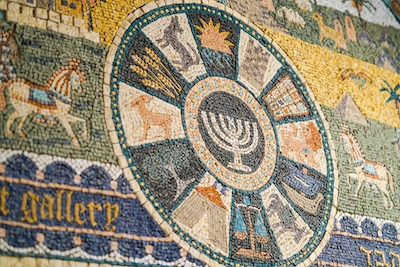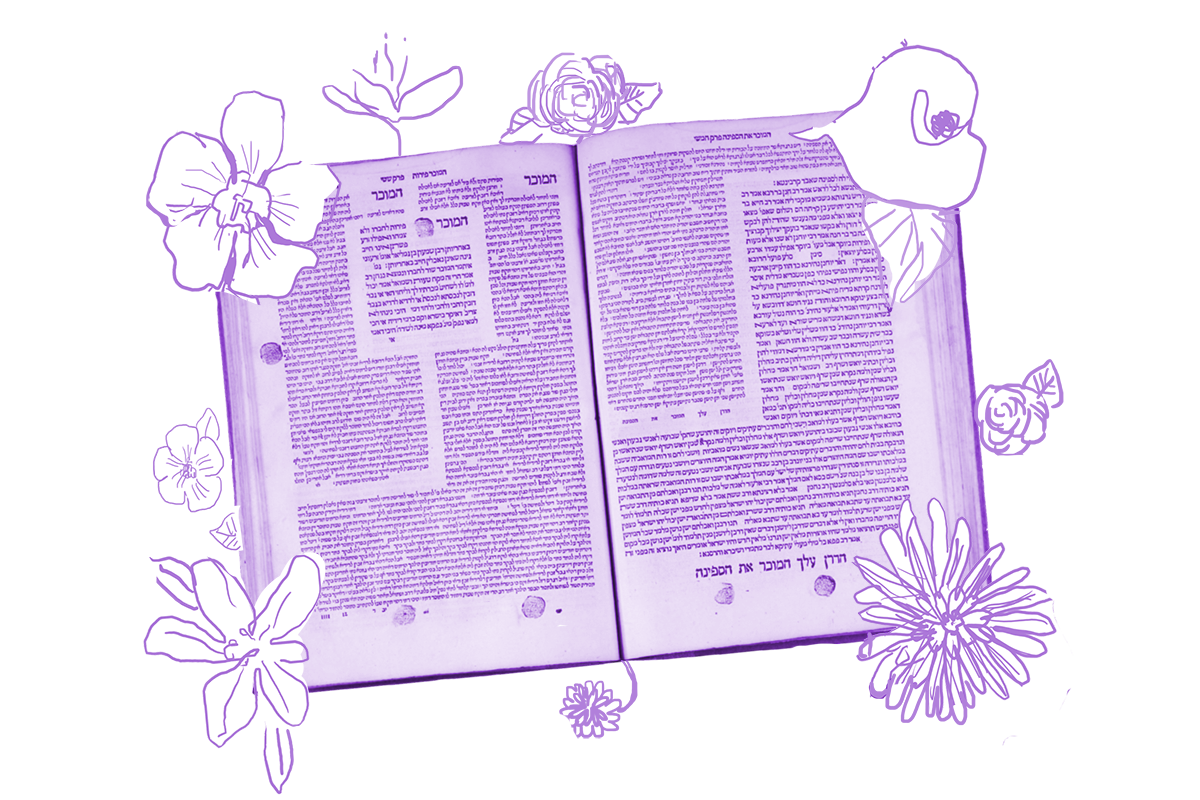After a grueling series of pages on the topic of proving ownership through possession, we are treated today to a page of aggadah, the more narrative-focused and ethical portions of the Talmud. We open with prosaic discussions of proper dress, the best way to set a table and how to organize the shoes under one’s bed, which leads into a series of ghost stories from beyond (or from within) the graves of famous people.
What links all these aggadic texts? Almost all are reported by one Rabbi Bena’a, a maverick who regularly skirts the borderline of the proper. We meet Rabbi Bena’a as he is marking the location of graves so that passersby will know where to walk to avoid contracting ritual impurity.
Curiously, Rabbi Bena’a actually enters several caves in order to ascertain where the dead bodies lie to know exactly where the impurity starts and ends. The reader may already sense that entering a grave crosses a line that ought not be crossed, but this doesn’t occur to Rabbi Bena’a.
When he arrived at the cave of Abraham, he encountered Eliezer who was standing before the entrance. Rabbi Bena’a said to him: What is Abraham doing? Eliezer said to him: He is lying in the arms of Sarah, and she is examining his head. Rabbi Bena’a said to him: Go tell him that Bena’a is standing at the entrance. Eliezer said to him: Let Rabbi Bena’a enter, since it is known that there is no (evil) inclination in this world. He entered, examined and exited.

Help us keep Jewish knowledge accessible to millions of people around the world.
Your donation to My Jewish Learning fuels endless journeys of Jewish discovery. With your help, My Jewish Learning can continue to provide nonstop opportunities for learning, connection and growth.
When Rabbi Bena’a enters the Cave of Machpelah where the patriarchs and matriarchs are buried, he encounters Eliezer, ever the dedicated servant, acting as Abraham’s gatekeeper even after death. Abraham meanwhile is lying in the intimate embrace of Sarah, who is examining his head, possibly staring into his eyes or maybe caringly picking out lice.
The bizarre scene of animated corpses does not bother Rabbi Bena’a, who rather politely assumes that he might be intruding on Abraham and Sarah’s privacy. He is informed by Eliezer that since there is no sexual urge in the afterlife, the rules of modest manners are also different. He may enter at will.
The story continues:
When he arrived at the cave of Adam the first man, a Divine Voice emerged and said: You gazed upon the likeness of My image, Do not gaze upon My image itself. Rabbi Bena’a said: But I need to mark the cave. The voice said to him: As dimensions of the outer, so are the dimensions of the inner.
There is a tradition that Adam was also buried in the cave of Machpelah, and Rabbi Bena’a seeks to measure his chamber as well. But a Divine Voice tells him not to enter and look upon Adam, since he was created in the image of God (Bereshit 1:27). Of course, Abraham too is created in God’s image, but Adam is the first human replica of God and this is getting too close to the divine.
Rabbi Bena’a is brazen enough to press his case: I have to go in to properly mark the graves, he protests. God doesn’t dismiss this claim, but he circumvents the need to enter, explaining that the measurements of Adam’s grave are the same as Abraham’s. Though only Adam’s grave is entirely off limits, the story hints that all graves ought to be private — both because a grave is a personal space where people are found in revealing positions and because the human body is created in the image of God.
Ostensibly, Rabbi Bena’a purpose is to help people avoid ritual impurity, but he has a fascination with gravesites that drives him to get as close as possible. He politely asks to intrude, and intrude he does. He “examines” the grave of Abraham and Sarah, just as Sarah “examines” Abraham’s head. The Talmud repeats the same word to indicate that both are close, intimate experiences of looking. Later, Rabbi Bena’a tells of the stunning beauty of Sarah and Eve. And though he doesn’t look at Adam’s face, he does report: “I gazed at his two heels, and they are similar to two suns.” His examination of these graves far surpasses the needs of marking off impure areas.
This story touches on the complicated relationship the living often have with death. The laws of impurity create a physical distance from graves, which thereby protects the dignity of the dead and protects the living from witnessing the process of decomposition first hand. In this story, however, the exploration of graves reveals a reassuring home scene: ongoing dedication, love and the lasting impression of the divine image on the human body. These may not be the things we expect to see in an actual grave, but they are emotions and values that we associate with remembering our loved ones after they pass.
Read all of Bava Batra 58 on Sefaria.
This piece originally appeared in a My Jewish Learning Daf Yomi email newsletter sent on August 22, 2024. If you are interested in receiving the newsletter, sign up here.



